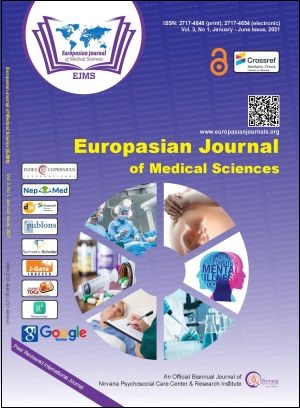Incidence of Congenital Fetal Malformations in Tribhuban University Teaching Hospital, Kathmandu, Nepal: a Hospital Based Study
Keywords:
Birth defects, Congenital malformations, Fetal abnormalitiesAbstract
Background: Birth defects are the abnormalities in structure or function present at birth. Major abnormalities of birth defects lead to physical or developmental disabilities which may need urgent medical or surgicaltreatment and may cause death in early days of life. The objective of this study is to find the incidence of congenital abnormalities in this institution.
Methods: This was a prospective study conducted in Institute of Medicine, Maharajgunj Medical Campus, Tribhuwan University Teaching Hospital from April 2014 to February 2016 . All the delivered babies in this hospital during the study period were included. All the birth cases of gross congenital fetal malformation were identified and carefully studied and classified with the help of the International Classification of diseases (ICD-10).
Results: Out of total 8300 birth in 22 months study period, congenital fetal malformation delivered during this period was 94 (1.13%) in 7868 live birth. The maximum number of congenital fetal malformation was seen in musculoskeletal system 24.44%. This was followed by a central nervous system 17.02%, gastrointestinal system 12.76%, and cardiac system 10.63%. There was equal number of congenital fetal malformation seen in renal system and genitourinary system 7.44%, in craniofacial system and miscellaneous 9.57%.The lowest number of congenital fetal malformation seen in respiratory system 1.06%.
Conclusion: Fetal congenital malformation has a major role in morbidity and mortality of neonates and children as well. The most common system involved in our study was musculoskeletal.
Downloads
Downloads
Published
How to Cite
Issue
Section
License
Copyright (c) 2021 Sunita Bajracharya, Deepak Rajbhandari, Binay Gurung, Asma Rana

This work is licensed under a Creative Commons Attribution 4.0 International License.
The author(s) retain the ownership of the copyrights for their work published in EJMS without any restrictions. Upon submission, the author(s) grants EJMS a license to publish, including to display, store, copy, and reuse the published content.
License to Publish
By submitting a manuscript to EJMS, the author(s) grant the journal a non-exclusive license to:
- Publish and distribute the content in all formats, media, and platforms (both existing and future), while identifying EJMS as the original publisher.
- Reproduce, display, and store the content in both print and online formats, including institutional and digital repositories.
- Translate, adapt, and summarize the work, including reprints, extracts, and abstracts.
- Develop derivative works based on the original content.
- Include the work in electronic databases and provide links to third-party materials.
Creative Commons Licensing
In addition to EJMS’s publishing rights, authors grant third parties the right to use, share, and distribute their work under the Creative Commons Attribution 4.0 (CC BY 4.0) International License. This allows unrestricted use of the content, provided proper attribution is given to the original author(s) and the journal.

